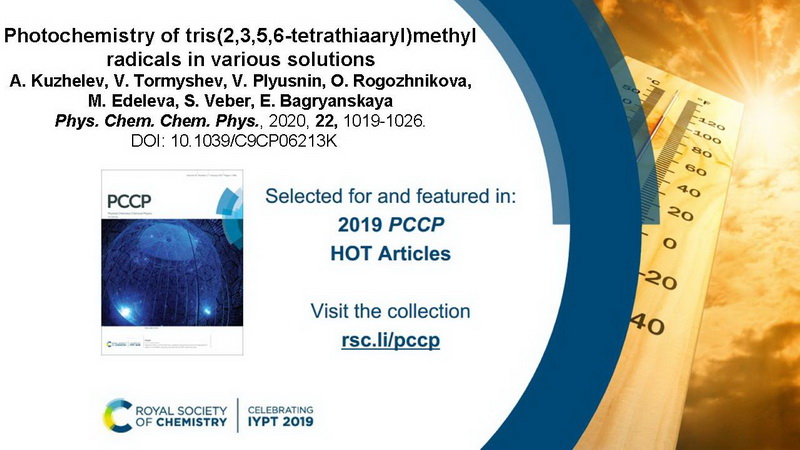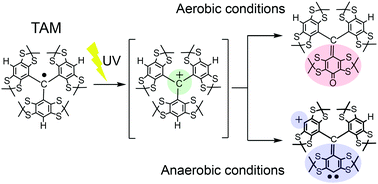Dear Prof. Bagryanskaya,
I am writing on behalf of the Editorial Board to thank and congratulate you for your recent contribution to PCCP, Photochemistry of Tris(2,3,5,6-tetrathiaaryl)methyl Radicals in Various Solutions, DOI: 10.1039/C9CP06213K.
I am delighted to let you know that this was extremely well received, and has been selected by our Editors as a 2019 HOT PCCP article. Please find the collection, now including your publication, here .
As part of the 2019 HOT articles collection, your article will shortly be made free to access until the end of June 2020, and announced to the PCCP community.
Thank you once again for your excellent contribution, and we look forward to receiving your next submission to PCCP.Kathryn Gempf M. Sci. MRSC
Development Editor,
Journals Royal Society of Chemistry

The Journal Physical Chemistry Chemical Physics, Vol. 22, Iss. 3, 1019-1026, 2020 (IF 3,567) published the article with the participation of the NIOCh;s researchers:
Photochemistry of tris(2,3,5,6-tetrathiaaryl)methyl radicals in various solutions
Andrey A. Kuzhelev, Victor M. Tormyshev, Victor F. Plyusnin, Olga Yu. Rogozhnikova, Mariya V. Edeleva, Sergey L. Veber and Elena G. BagryanskayaPhysical Chemistry Chemical Physics,
Vol. 22, Iss. 3, 1019-1026, 2020
First published: 11 December 2019
doi: 10.1039/C9CP06213K

Abstract
During the last decades, persistent tris(2,3,5,6-tetrathiaaryl)methyl radicals (TAMs) have attracted much attention due to their applications in oximetry, EPR tomography, and as spin labels in pulsed dipolar EPR spectroscopy. Recently, researchers proposed to use TAM radicals as spin labels and/or a partner for photoinduced spin labels. Thus, the questions of their photochemical stability and mechanism of degradation under UV irradiation have become relevant and important. In this study, steady-state photolysis and flash photolysis of TAM radicals were investigated. A detailed mechanism of TAM phototransformations was proposed and confirmed by NMR, gel permeation chromatography, and mass-spectrometric analyses of the products.
Altmetrics:


